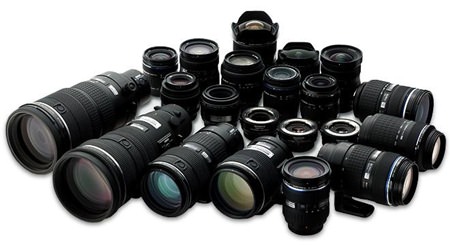
The stimulus for this week’s column came from an American pro photographer suggesting I bring to the readers’ notice the differences between the lenses available for your DSLR.
Did you know that pro photographers do not use one zoom lens, even if it could cover 18-800 with one flick. Pro photographers will have many lenses, but prime lenses to almost cover that 18-800!
Please Support Pattaya Mail
One of the questions professional photographers often get asked is, “What lens would you use to shoot a (insert the subject)?” However, the lens a pro selects depends upon many factors, and the subject being shot is only one of the important ones!
If that sounds confusing, do not worry, it will become more clear as you read on. You see, you can get a shot of your pet subject using any old bit of glass on the front end of your camera. In some instances, you can almost get the identical looking shot of the subject with a 28 mm lens, a 50 mm or a 135 mm. By now you are saying, why have all these different lenses if the shots look all the same? The essential word here was “almost” the same. There will be tell-tale differences and it is these differences that make or break your photographs. By using the differences you can manipulate the shot to produce the effects you want.
Right then, let’s get down to some examples. You are on a tropical beach, Bang Saray will do, and you want the blue skies over the sea type of picture. Unfortunately, the sky is only pale blue. What to do? The lens to use to increase the blue color of the sky is the widest angle lens you have got in the bag. How does this work? Simple, you are taking an enormous area of sky with the wide angle and compressing it into the small 35 mm equivalent in digital terms. Compressing all that sky increases the depth of the color and makes it more blue than it really was!
Another example, you have just bought a car and want to send a photo of it to your relatives at home. You want it to appear as imposing as possible. What to do? Leave the wide angle lens on and get down low and close to the car. Look through the viewfinder and the car suddenly looms large and powerful above you. The closer you get, the more it looms above you. Click! It is in the bag of pixels and on its way to impress the relatives.
This distortion with wide angle lenses is the reason you should not use one for portraits. Unless you want the nose looming large and powerful.
I was going to ignore ‘selfies’ taken with camera phones, but since I see these pictures being taken every day, I will mention them. Camera phones generally have wide angle lenses to get depth of field, but now add in the distortion of the subject close to the camera phone and you have that swollen arm coming out of the photograph. Hideous result. Don’t do it!
What about a nice close up of your favorite painting you bought? Another “genuine” Sunflowers by Van Gogh. Will you use a close-up lens or the wide angle setting on the zoom lens? No, you should use the telephoto long lens and stand back. If you go in close with the wide angle you will get distortions at the edges and strange shadows across the canvas because you physically get in the way of the light. With the long lens there is less distortion and the light will fall evenly across the picture.
Mind you, there are times when the subject being shot does dictate the lens you would use. Let me assure you that when photographing man-eating lions I would use the longest lens in the world. A close up lens to photograph its dental work would not be my idea of fun!
So there you are, think about the effect you want, rather than just the subject matter when deciding what lens to choose. And finally look through the lens to ensure that you are getting what you want.
Thank you Peter Brock in Chiang Mai.
 |
 |
 |





